
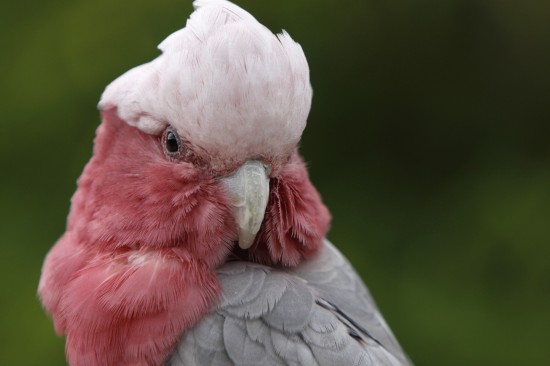
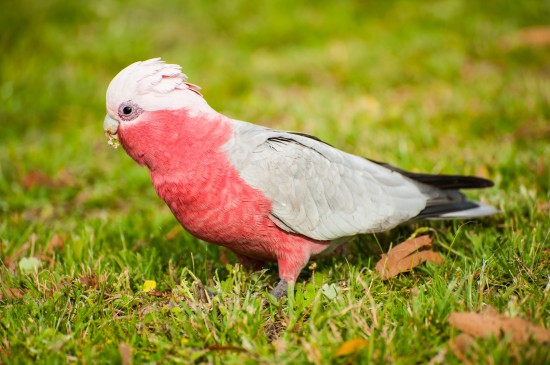
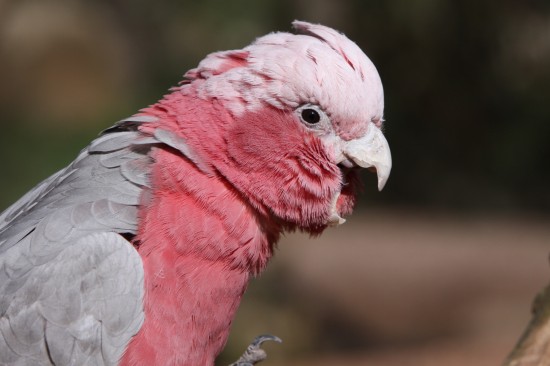
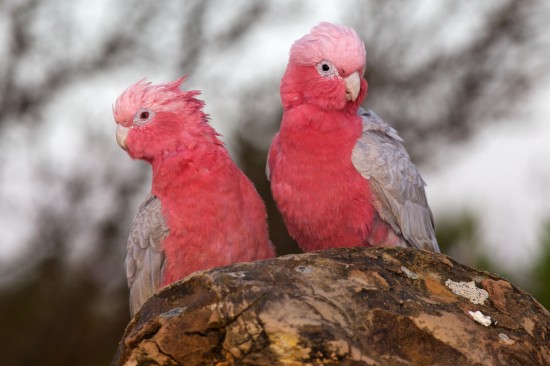
The Galah Cockatoo (Eolophus roseicapilla) is also known as the Rose-breasted Cockatoo and is among the most common and widespread of the cockatoo family. It lives mostly in the open country across the whole of mainland Australia, as well as having been successfully introduced to Tasmania.
In general, Galahs are around 35cm in length and weigh around 270-350g. they are pale grey or darker grey with a pale grey rump, pink face and chest and a light pink crest. The skin around their eyes is white and bare, and they have grey legs. Sexes are similar, though the male has dark brown irises while the females are mid-brown or red.
In the wild, these are very sociable birds and can live in flocks of over 1000 parrots and also with other types of parrots.
These cockatoos are playful parrots who have lots of energy and can learn to perform tricks or mimic human speech. Their lifespan is 20-40 years so to take one is a long-term commitment. They also need daily time out of their cage in a large area which has been made bird-safe. They can also be noisy, so if this may be a problem where you live, these might not be the right birds for you.
If you are keeping your Galah in a cage when not out and about, it is important that the cage is placed in a ‘high traffic’ area of the house where they can interact with the residents. The cage should be as big as is possible, due to their propensity for weight gain and simply because any larger bird prefers a spacious home. It is also important that a variety and texture of perches are put in the cage, for boredom relief but also to help avoid foot problems such as arthritis and to keep their nails trimmed. Metal grates at the bottom of the cage are always a good idea to avoid them walking in their own waste.
When the Galah is in their cage, it is important that they have toys and activities to avoid boredom and excessive noise. You can also include food into these activities, so this keeps them occupied and fed at the same time. Skewers filled with food are one simple option.
Out of the cage, these are very curious birds and like all parrots, investigate with their beak so will chew anything. If they destroy their toys, don’t worry, if means they have enjoyed playing with them!
You can use the crest movements as a bit of a mood ring. If they are startled or excited, they will lift their crest feathers while they will lie flat on their heads when calm or happy. This is useful to get the hang of when to give your bird a little space.
Galahs have more dander, the powdery substance on their feathers, than most parrots and like to bath regularly. 3-5 times in winter months and 5-7 times in summer months is completely normal for the cockatoos. This can mean if someone in the house has allergies; this could be a problem for them. Otherwise, by regular bathing the bird can keep themselves in top condition. If they are hesitant around a bathing bowl, try misting gently with a spray bottle or even get a shower perch and take them in the shower with you. Also try different temperatures of water, as they have preferences just like we do.
Not bathing can lead to feather plucking where they over-preen themselves and chew up feathers in an attempt to get them properly clean. It can also be a sign of an imbalance in the diet, or boredom.
The central areas of their diet should consist of low-fat organic pellets as they are prone to fatty tumours. Fruit, vegetables and cooked meats are also crucial for a healthy bird with seeds and nuts given as treat food.
If your bird provides to be picky about his veggies, it can often help to cook them. For example, cooking sweet potatoes so it is soft then leaving to cool before offering it to the bird may make it more palatable for them. Any fresh food not eaten within 24 hours should be thrown away.
They enjoy dipping their food in water, or use it to soften up a hard food, so it is important to keep an eye on their water bowl to avoid bacteria build up.
Many people monitor their bird’s weight with a regular stop on the scales to give them a head’s up if there are any developing health problems. Diarrhea is another sign of health problems, when the fecal part of the stool has not formed properly. This can often be caused by having too much fruit in the diet or may be a sign of a parasite in the stomach. It may be worth checking with a vet if this happens.
In the wild, these cockatoos nest in tree cavities where they lay 2-5 eggs. These are incubated by both birds for around 25 days and the chicks fledge at around 49 days of age. Birds bond for life.
There have been incidents of hybridisation with Major Mitchell’s Cockatoos where they have the body shape of the Galah and the crest and colours of the Major Mitchell’s. They can also cross breed with the Cockatiel, the offspring being described as Galatiels.
These fantastic big birds are filled with character, curiosity and fun, are beautiful to look at and great to live with. Remember the amount of dander given off by their feather may cause problems for people with allergies and the amount of noise they can make isn’t ideal if you live in a built up apartment or such. But if you can offer the right home to one of these birds and give them the love and attention they will give to you, then they will make a wonderful addition to the family for many years to come.
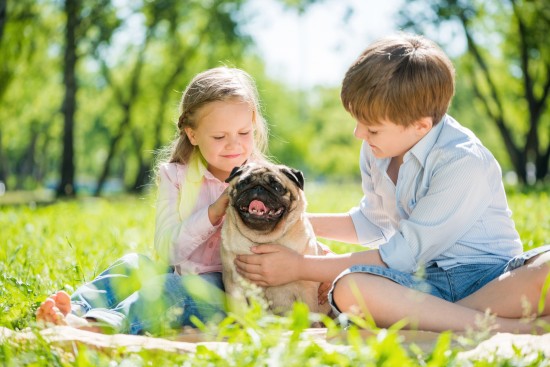 10 Great Tricks Your Kids Can Teach A Family Dog
10 Great Tricks Y
10 Great Tricks Your Kids Can Teach A Family Dog
10 Great Tricks Y
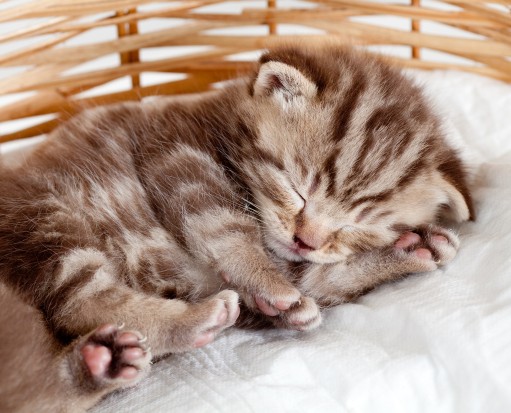 Things Cats Love To Do Whenever They Can
Things Cats Love
Things Cats Love To Do Whenever They Can
Things Cats Love
 Online Pet Supplies – Better Way To Shop Is Online
Our pets give us joy and happiness. They motivate us to
Online Pet Supplies – Better Way To Shop Is Online
Our pets give us joy and happiness. They motivate us to
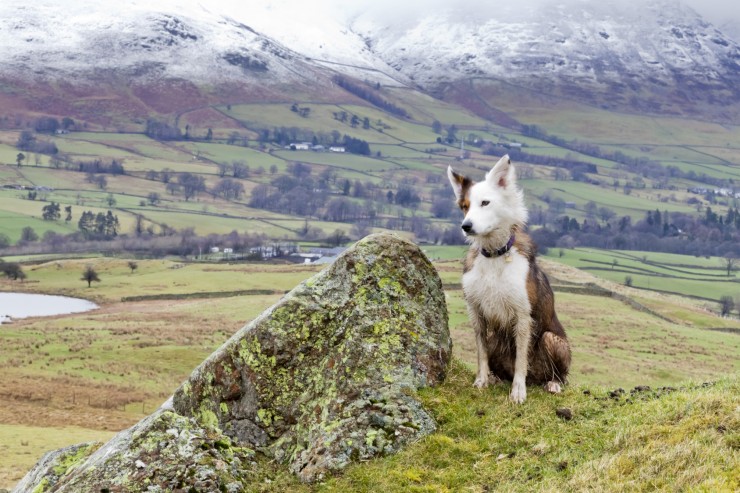 Pet-friendly Holiday Cottages In The Lovely Lake District
Pet-friendly Holi
Pet-friendly Holiday Cottages In The Lovely Lake District
Pet-friendly Holi
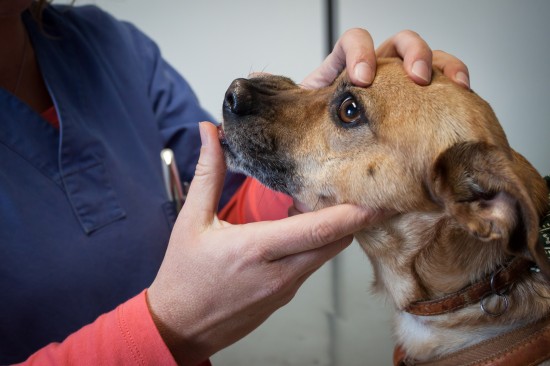 What White Gums In Dogs Means
What White Gums I
What White Gums In Dogs Means
What White Gums I
Copyright © 2005-2016 Pet Information All Rights Reserved
Contact us: www162date@outlook.com